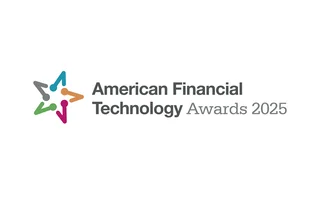SST Awards 2018: Best Use of the Agile Methodology—Duco

Duco, which typically works in two-week sprints and releases updates every four weeks, describes itself as a software-as-a-service (SaaS) company that provides capital markets firms with self-service data reconciliation and validation solutions. It uses Agile techniques to deliver business value to its customers quickly—not just as part of its software development process, but as a mindset across the whole company. “All of the classic things you see with Agile—close collaboration between product management and development, scoping sprints and releases, self-organizing teams managing themselves through the process, and iterative releases—have been in place for several years, and it’s a slick, well-oiled machine,” explains Phil Jeffery, vice president of engineering at Duco. “What’s also important is that all the functions around development are structured as well. Sometimes you see Agile done in the tech function, but not across the rest of the business, which limits its impact. Here, the whole company—whether it’s development, product management or customer success—is structured to release incrementally.”
Jeffery explains that all of Duco’s development and information-sharing functions are underpinned by Atlassian tools: Its internal workflow is managed by Jira, its continuous integration uses Bamboo, its code repository is managed by BitBucket, and Confluence takes care of the vendor’s documentation and information-sharing functions.
One of Agile’s primary day-to-day benefits is that it allows providers to get a lot closer to their clients and engage them on an ongoing basis. To this end, Duco has a customer success team that constantly engages its clients in order to understand their immediate needs and business goals, which then get funneled through into the firm’s sprints and releases. “Therefore, what we are doing is never far from what our customers want,” says Jeffery. “And then because you have fast release cycles, you get quick feedback, which sometimes means there might also be some corrections that need to be made. But we trust our ability to make those corrections quickly. Finally, from a techie perspective, there is also risk mitigation—we release often and we’ve become good at it, and we also release less [software], but more often.”
Only users who have a paid subscription or are part of a corporate subscription are able to print or copy content.
To access these options, along with all other subscription benefits, please contact info@waterstechnology.com or view our subscription options here: https://subscriptions.waterstechnology.com/subscribe
You are currently unable to print this content. Please contact info@waterstechnology.com to find out more.
You are currently unable to copy this content. Please contact info@waterstechnology.com to find out more.
Copyright Infopro Digital Limited. All rights reserved.
As outlined in our terms and conditions, https://www.infopro-digital.com/terms-and-conditions/subscriptions/ (point 2.4), printing is limited to a single copy.
If you would like to purchase additional rights please email info@waterstechnology.com
Copyright Infopro Digital Limited. All rights reserved.
You may share this content using our article tools. As outlined in our terms and conditions, https://www.infopro-digital.com/terms-and-conditions/subscriptions/ (clause 2.4), an Authorised User may only make one copy of the materials for their own personal use. You must also comply with the restrictions in clause 2.5.
If you would like to purchase additional rights please email info@waterstechnology.com
More on Awards & Rankings
AFTAs 2025: Best IT team—TCW Group
Team: TCW Group’s Investment Technology Team; Project: Engineering Solutions—ABF and insurance launches during Aladdin stabilization
Buy-Side Technology Awards 2025 winner’s interview: 73 Strings
73 Strings’ win in the BST Awards 2025 Best middle-office platform category
AFTAs 2025: Most cutting-edge IT initiative—J.P. Morgan
Project: Vida Beta One
Buy-Side Technology Awards 2025 winner’s interview: S&P Global Market Intelligence
S&P Global Market Intelligence’s success in the first year the Best private markets data provider category has been on offer.
AFTAs 2025: Most innovative third-party technology vendor (operations)—AutoRek
Company name: AutoRek
AFTAs 2025: All the winners and why they won
Here are the winners of the 31 categories making up this year’s American Financial Technology Awards.
AFTAs 2025: Best new technology introduced over the last 12 months (trading, risk and compliance)—IntelligentCross
Project: IntelligentCross JumpStart




